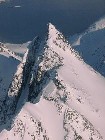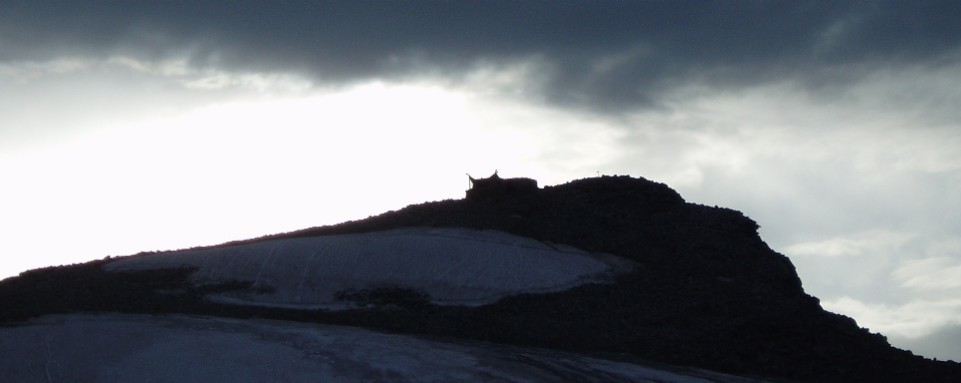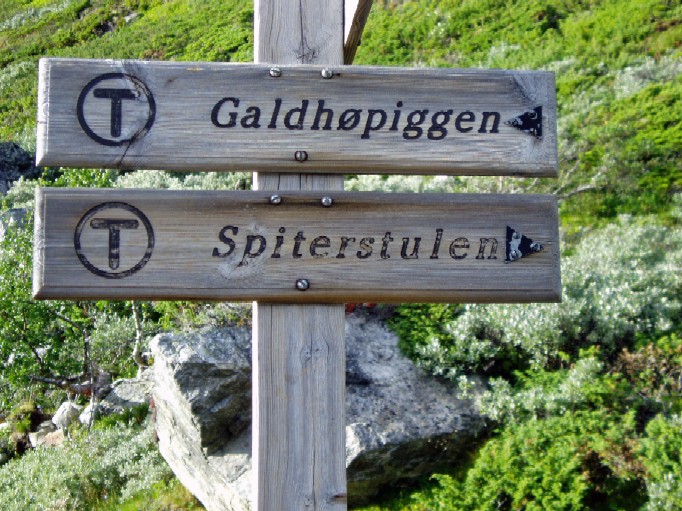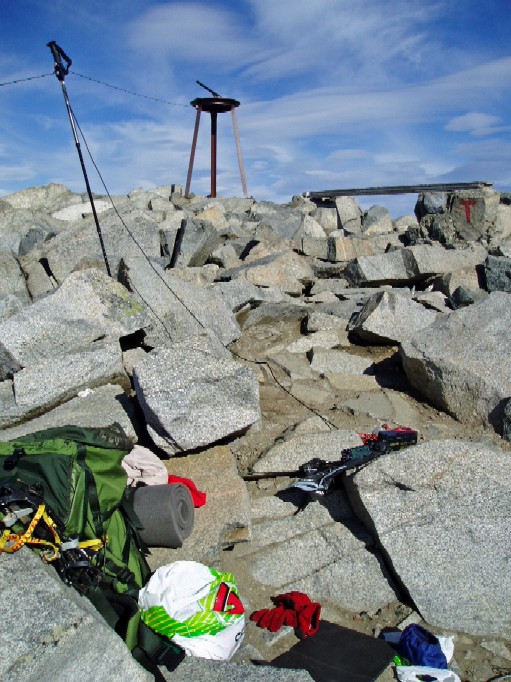CQ de LA8OKA from Galdhøpiggen, Norway's highest peak.
This article has also been a feature article on the ARRL website, please see: http://www.arrl.org/news/cq-de-la8oka-from-galdhoepiggen-norway-s-highest-peak
Saturday the 5 of August 2006 I took the trekking route from Spiterstulen to Galdhøpiggen, Norway's highest peak with its 2469 meters above sea level. This was planned to be a trip with two of my radio amateur friends from the LA1FDG LA Field Day Group, but during the week before the trip, one hurt his back, and the other got a terrible cold. Because I already did so much planning for this trip I decided to go to Galdhøpiggen anyway. Since I was going by myself, I decided to use my own call sign in place of our original intentions of using the LA1FDG call sign. On the way to the summit I also climbed the sub summits Svellnose (2272 asl) and Keilhaus summit (2355 asl) since the Norwegian Trekking Association's marked path goes quite near those summits. It was an excellent weather with almost no wind and nice warm sun, so I was walking in shorts and T-shirt all the way to the summit. Because my sleeping mat was tied on the outside of my backpack, I got questioned by many if I where going to sleep on the summit, I answered yes on this question.
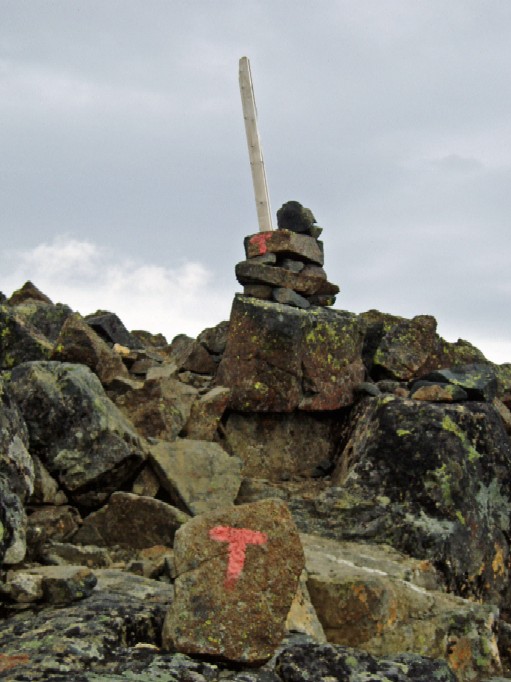
Due to my heavy backpack I took it easy on the way to the summit. I was going to sleep there anyway, so there where no reason to rush to the top.
There were a lot of reindeers to see on the trip to the top. Due to the heat they tended to stay on the glaciers to get rid of the insects and to get some cooling. There where many eager photographers who pulled up their cameras and zoom lenses to get a shot of the reindeers. The reindeers didn't seem to take any notice of all the people, they are probably so used to be taken pictures of, that they would probably be insulted if we didn't had try to take picture of them, hi. These reindeers belong to local farmers, and not to Santa Claus, as some of the children were told by their parents.
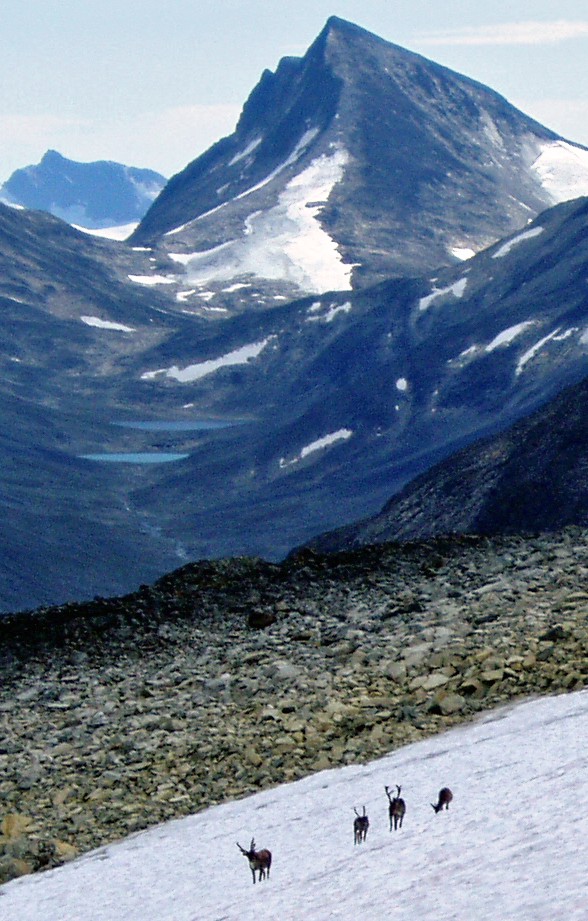
There where quite a crowd on the summit, approximately 800 people reached the summit this day. Most of them were already on their way back down to the valley when I entered the summit with my heavy backpack. I managed to find a place without too much wind behind some large rocks and started to cook myself a meal. Food always tastes delicious when trekking in the mountains.
I used the evening to talk to Erlend; he should live on the summit of Galdhøpiggen for 6 weeks. He was working for the owners of the summit hut, and was selling coffee, food and chocolate during the daytime. He used the evenings to clear the summit for garbage left there by the tourists. The prices in the kiosk where quite high, but none seemed to care about this, I guess most of the people were glad that someone else took the effort in carrying everything up to the summit.
Despite some wind, I had it nice and warm inside my sleeping bag, and I didn't had any problems to sleep through the night outside. (It's not allowed for tourists to sleep inside the cabin.)
I woke up to a beautiful morning. After the breakfast I set up the antenna between the summit disk and a couple of walking poles that I had brought with me.
I used an ICOM IC-703 transceiver; this transceiver has a built-in antenna tuner and has 10 watt output on HF and 50 MHz. Even with only 10 watts output I have had several transatlantic contacts with this transceiver on SSB earlier. To power the transceiver I used a 7,2 AH battery, this battery provides enough power for several hours of operation with the IC-703. Unfortunately this is a sealed lead acid battery, and it weights about 2,7 kg, actually more than the transceiver. But lead acid batteries are cheap, easy to get, and easy to charge. The antenna I used was a simple half wave dipole antenna, and with some luck, I had some hope that I could manage to tune the antenna up on 17 m also with the built-in antenna tuner of the IC-703. When the antenna was set up it turned out that it was only possible to tune the antenna on 20 m. That was probably due to the very low high above ground for the antenna. Previously I had tuned this antenna with ease on 17 m, but then the antenna has been considerably higher above ground. To save as much weight as I could, I had only brought with me a short piece of coax, just about 3 meters. Due to this, I placed the transceiver right below the feeding point of the antenna.
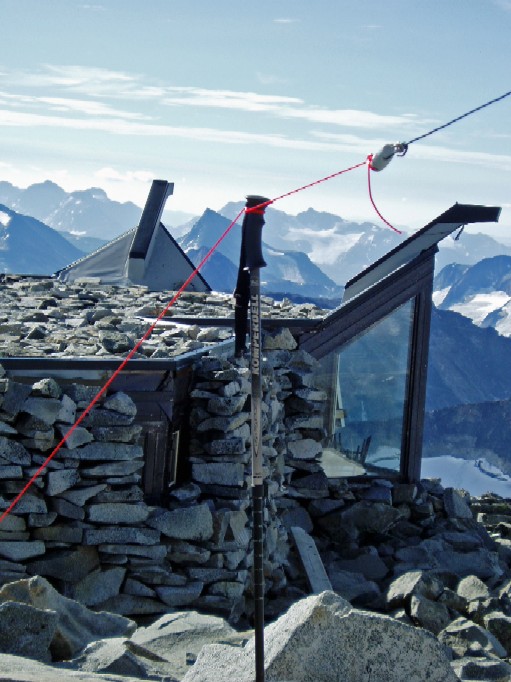
In a short time I managed to get contacts with several radio amateurs from Germany, Ukraine and Italy. The special QTH made a lot of attention on the band, especially with German stations, many who had a good knowledge of Norwegian geography. One German had even been on the summit of Galdhøpiggen himself. After a long explanation about the Norwegian letter Ø to a station from Spain, I dropped the Ø in Galdhøpiggen when I was asked to spell the name of the QTH, instead I used OE and spelled like this; Galdhoepiggen.
As time passed, more and more people who arrived at the summit started to ask me what I was doing. Because of this the QSO rated dropped, since I took the time to tell them about amateur radio and show them how it all worked.
A couple of the people that had climbed the summit turned out to have radio amateurs as neighbors; I bet they had an unusual story to tell their neighbor when they got back home!
It was clearly that many people got impressed when they could hear European and American stations loud and clear with this simple equipment, when it was almost impossible to get coverage with their cellular phones.
My handheld, a Kenwood TH-7E, also attracted some interest, and I had to show how I could reach people down in the valley by using one of the local repeaters.
I think this is a good example of how it's possible to combine trekking and outdoor life with amateur radio and have a lot of fun while doing it! Be sure to bring with you some ham gear next time you are going for some trekking in the wilderness!
73 de LA8OKA Martin
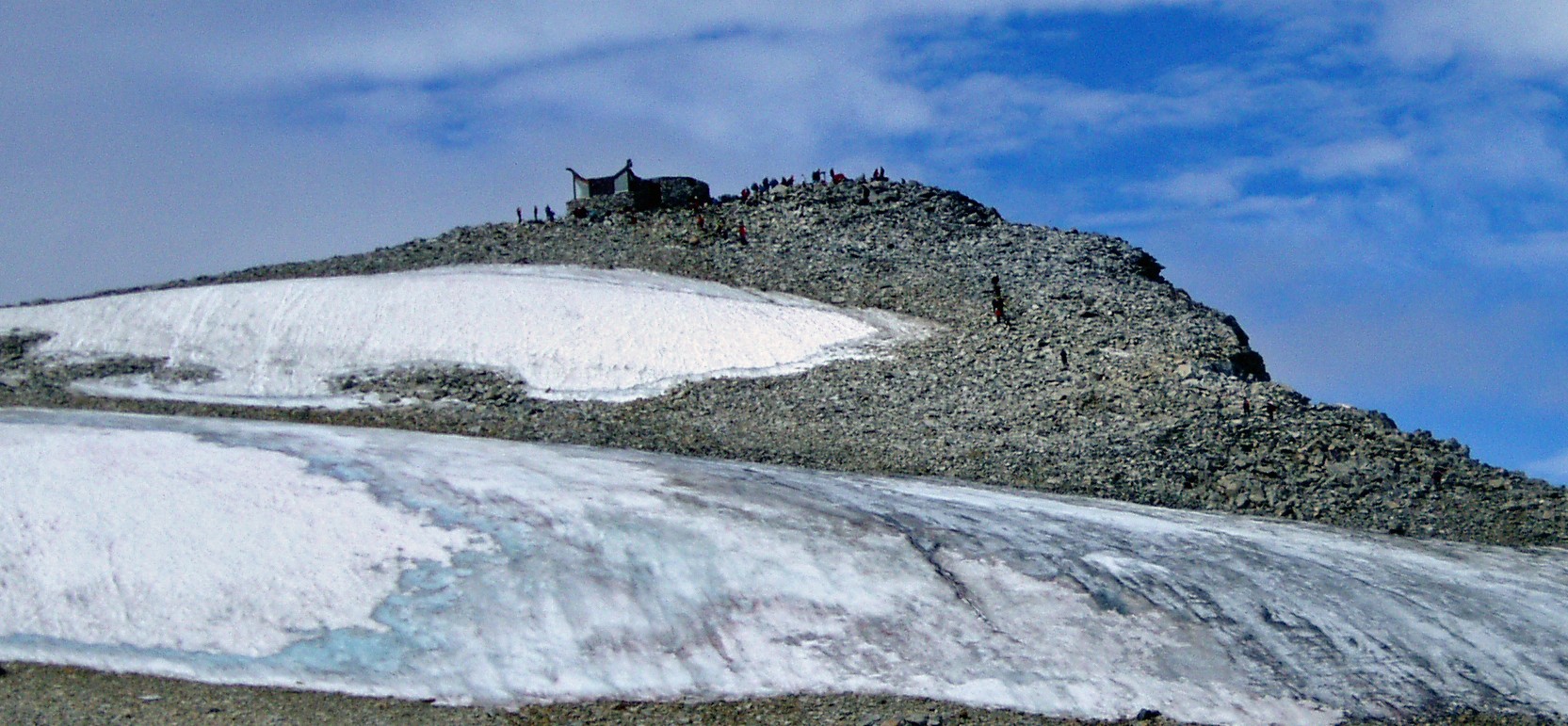

This page was last updated 13.05.17 .
